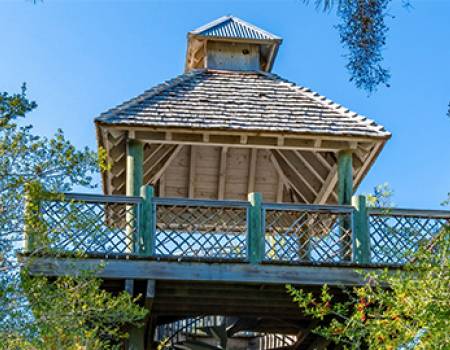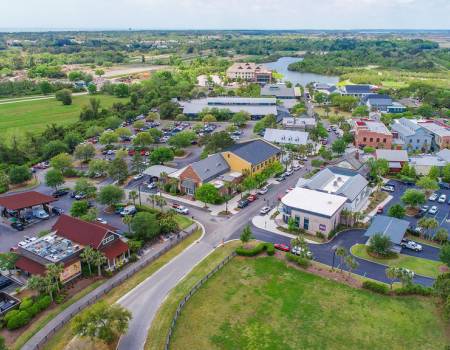Just 25 miles southwest of Charleston, Kiawah Island is a coastal paradise for those who enjoy sandy beaches and the beautiful ocean. It's also a haven for one of the most beloved animals on earth: the Atlantic Bottlenose Dolphin. Learn all about these local dolphins and where to find them on Kiawah Island!
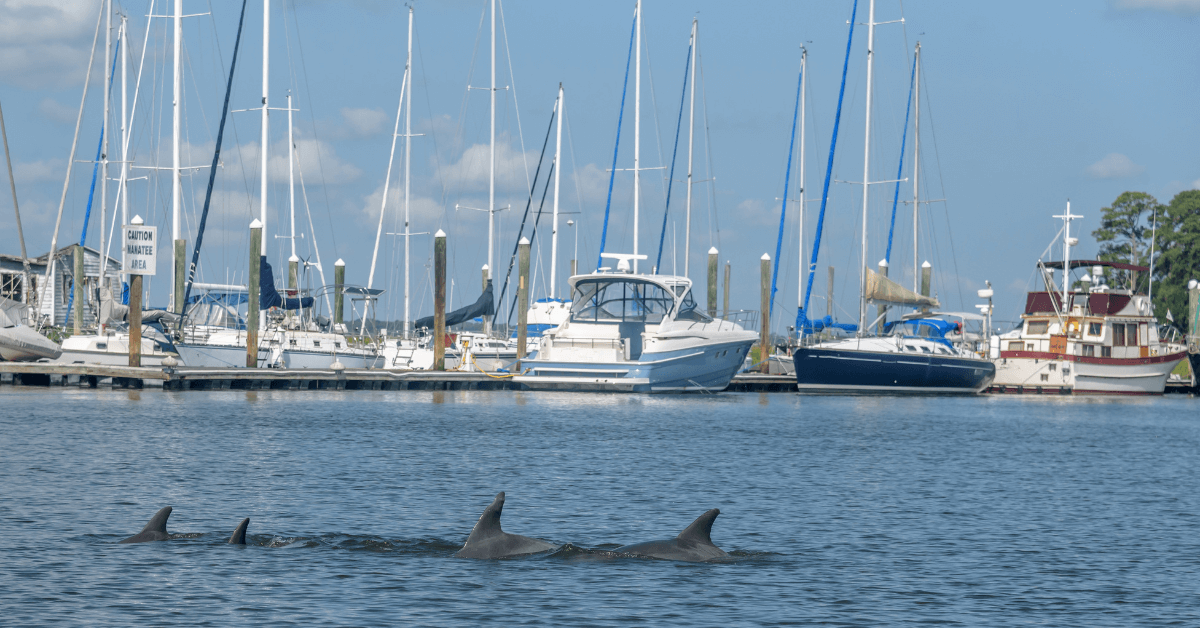
Guide to Kiawah's Local Dolphins
Kiawah Island is home to a spirited population of dolphins that can frequently be spotted just off the shore and in the marshes, creeks, and rivers. These playful mammals are intelligent, fascinating, and, let's face it, adorable!
Where Can I See Dolphins on Kiawah Island?
Contrary to popular belief, you don't have to be in the middle of the ocean to encounter dolphins. Atlantic Bottlenose Dolphins can often be seen frolicking in the tidal marshes, creeks, and rivers. If you ask a local, they'll most likely tell you to visit Captain Sam's Inlet, also known as Captain Sam's Spit, to see dolphins. Separating Kiawah and Seabrook Islands, Captain Sam's Inlet is located at the end of Kiawah's Beachwalker Park.
Plan a Dolphin Watching Adventure
- Captain Chad Hayes, Eco Tours. Captain Chad Hayes, also known as Charleson's Dolphin Whisperer, knows the local dolphins like the back of his hand. Book one of Captain Chad's award-winning Eco-Tours and you can almost guarantee to catch a glimpse of these majestic mammals.
- Water Dog Paddle Co. Embark on an eco-experience unlike any other with Water Dog Paddle Co.'s Dolphin Paddle. Water Dog's signature tour takes you on a guided Kayak or Stand Ip Paddleboard adventure through the estuaries of the southern Sea Islands.
- Captain Jack's Sailing & Dolphin Watching Adventures. Captain Jack has spent years observing and studying the local dolphins. Book a dolphin-watching trip and get ready for the experience of a lifetime!
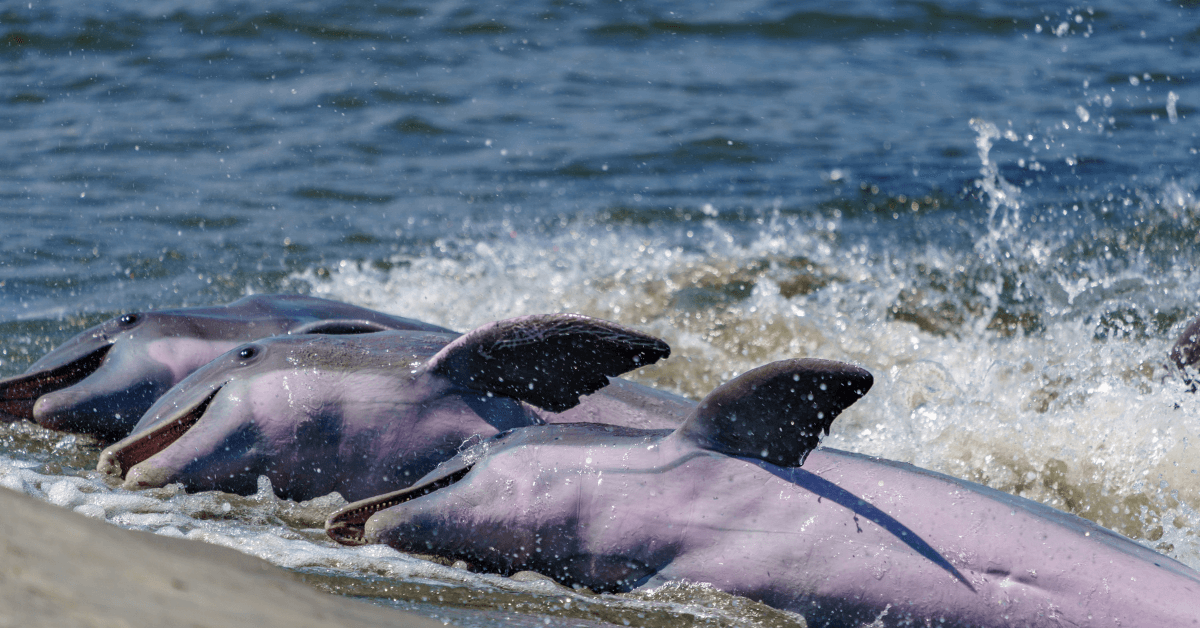
What is Strand Feeding?
Strand feeding occurs in just a few places around the world, including along the coast of South Carolina and Georgia. This unusual practice involves multiple dolphins herding shrimp or fish together. Then, the dolphins form a line and create a wave that forces their targets onto the shore. Lastly, the dolphins launch their bodies out of the water to feed on their trapped prey.
If you are lucky enough to witness a strand feeding, it is very important to remain back from the scene and never intervene.
Identifying Atlantic Bottlenose Dolphins
Appearance
Just as their name suggests, bottlenose dolphins have a very short and stubby beak that resembles a bottle. They can measure anywhere from 6 to 12 feet and weigh up to 650 pounds, fully grown. They are mostly a gray shade, but their bellies have a hint of pink. Due to the slight upturn to the corners of their mouths, dolphins always look like they are smiling.
Communication Skills
Bottlenose dolphins are extremely social creatures and are sophisticated enough to communicate with each other. Dolphins communicate with each other by squeaking, whistling, leaping out of the water, snapping their jaws together, flipping their tails, and butting heads.
Atlantic Bottlenose Dolphins travel in groups, called “pods,” which consist of 10 to 15 members. Often, pods assist mother dolphins in raising their calves. They also work together to get food through a unique process known as strand feeding.
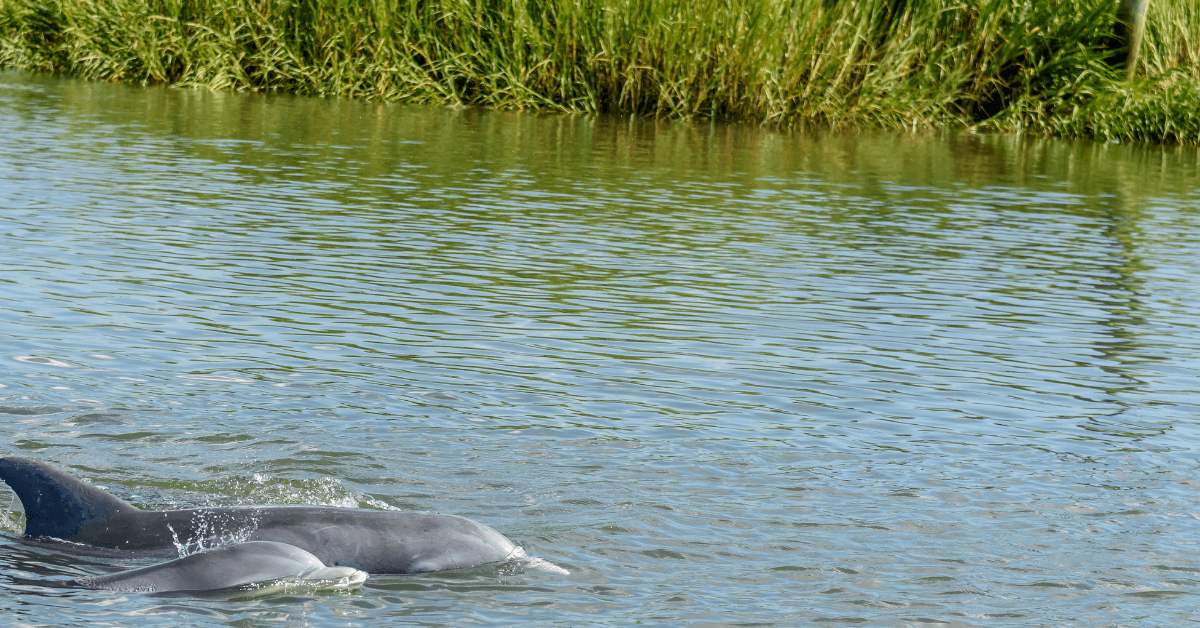
More Fun Facts
- Bottlenose dolphins have a thick layer of blubber, which helps them maintain their body heat and protects them from predators like sharks or killer whales.
- Their smooth skin is very sensitive and regenerates every few hours.
- Dolphins never fully sleep because, unlike humans, they must be awake to breathe.
- While bottlenose dolphins cannot smell, they have extremely good hearing and eyesight.
- You can determine the age of a dolphin by counting each layer of their teeth.
- They can swim over 20 MPH and dive as deep as 800 feet below the surface.
- Some bottlenose dolphins remain in the same region for generations, never migrating.


